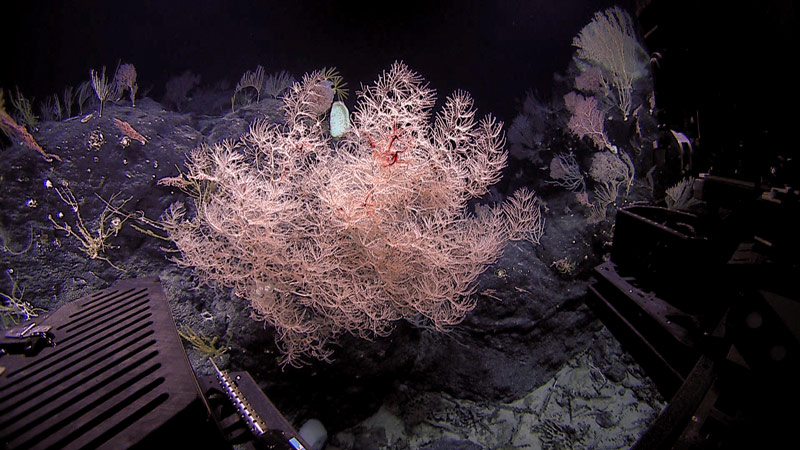
Deep Discoverer images a high-density coral community in the Pacific Remote Islands Marine National Monument. Image courtesy of the NOAA Office of Ocean Exploration and Research, Deepwater Wonders of Wake. Download larger version (jpg, 1.3 MB).

Deep Discoverer images a high-density coral community in the Pacific Remote Islands Marine National Monument. Image courtesy of the NOAA Office of Ocean Exploration and Research, Deepwater Wonders of Wake. Download larger version (jpg, 1.3 MB).
Dive 3: Delilah Seamount
Deep Discoverer explores a high-density coral community in the Pacific Remote Islands Marine National Monument. Video courtesy of the NOAA Office of Ocean Exploration and Research, Deepwater Wonders of Wake. Download larger version (mp4, 133.4 MB).
We conducted the third dive of the expedition today on an unnamed guyot. The dive was conducted on the southwest rift zone, which was similar in orientation and topography to the area we explored on Dive 2. Deep Discoverer reached the bottom at a depth of about 1,990 meters. The seafloor during this dive was characterized with some steeper and more level sections that hosted mainly massively covered rock and more sand-covered manganese-encrusted rock, respectively. The steeper sections appeared to consist of small knobs and hills seemingly built by pillows. We found an assortment of animals throughout the dive, including corals and sponges, as well as a polychelid lobster, crinoids, and a cusk eel. As we moved up slope, the number of animals increased significantly and it became clear that the highest densities occurred on the edges of the ridge, particularly the northwestern edge. The favored substrate appeared to be the massively coated hills and boulders, likely because these locations optimize exposure to currents bringing food. Several of the boulders were very dense with life. Overall, it was a very successful dive. After we recovered the remotely operated vehicle, we started transit mapping to our next dive site.